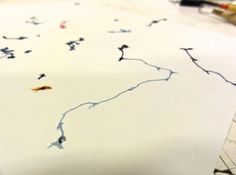I have always been fascinated with the human body, the idea that we are made up of so many different elements and organs that we know so much and yet so little about. They are what allow us as humans to move, communicate and consciously think and yet we cannot see them.
I think this curiosity peaked when a couple of years ago I went to the ‘Bodies’ exhibition, ever since then I have wanted to explore the delicacy of our bodies (like the blood vessels and nuclear cells) as well our own physical presence.
This is by far one of the best exhibitions I have ever been too, and I think the reasons why really speak for themselves! Not only is it the first of its kind but it is also scientifically and visually amazing.. everything is done with so much skill and dedication that it’s difficult not to be amazed by it (or at least that’s what I think).
Here’s a few link encase you’re as interested in it as I am…
http://www.premierexhibitions.com/exhibitions/4/4/bodies-exhibition
http://en.wikipedia.org/wiki/Bodies:_The_Exhibition
This also got me looking at William Cowpers work in my second year of University
This is a link to that blog post























